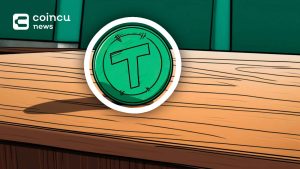Tether stopped printing USDT for over 40 days – why?
According to the tweets From the Mr. Wal account, the parabolic growth of the massive stablecoin market capitalization USDT has suddenly stalled in the last 40 days since the end of May, while Bitcoin price fell to an all-time high.
“Tether hasn’t printed a USDT in over 40 days, making it the longest outage since late 2019 – early 2020.”
Since Bitcoin began trading in the $ 30,000 to $ 40,000 range, new rumors have been circulating linking the two events and repeating an old guess: Has USDT stopped pumping Bitcoin?
USDT Market Cap vs. Bitcoin Price | Source: Glassnode
However, according to analysts and market participants, the abrupt halt in USDT pressure shows that its dominance is threatened by three unprecedented challenges that combine in a perfect storm to shake the largest stablecoin on the market: Problems in the Chinese market are tough Made for traders buying USDT with fiat there, one of USDT’s most promising competitors, USDC, appears to be gaining market share and regulatory pressures are mounting around the world.
A manager at Tether admits that the demand for USDT is falling, but argues that the trend isn’t just happening to them.
Paolo Ardoino, Tether’s chief technology officer, said in a written response through a spokesman that “USDT demand has fluctuated frequently and has been affected by lower demand over the past few weeks,” noting that USDT is not the only stablecoin that is affected by lower demand.
Paolo Ardoino – Chief Technology Officer at Tether
China is taking action against cryptocurrencies
The crypto crackdown in China – both in terms of bitcoin mining and trading – has hit BTC price, which is now down 52% from its all-time high of $ 64,928 in April to around $ 31,421.
But another victim of the new crypto crackdown in China is USDT. Because the success of this stablecoin is mainly due to Chinese investors and traders. They often use dollar-pegged stablecoins as an entry vehicle to the crypto market through OTC brokers for fiat-to-crypto trading or buying digital assets for cash. Government issuance is still illegal in the world’s most populous country.
Last month, Chinese police arrested more than 1,000 people for money laundering alleging they used cryptocurrencies to circumvent the law. Such measures would be detrimental for OTC traders and this is also the reason why the growth of the USDT slowed significantly in China.
Annabelle Huang, partner at Hong Kong-based crypto asset management firm Amber Group, said:
“It is very difficult to do the on-off ramp in China to get to crypto. Many OTC traders have stopped trading. “
With Bitcoin struggling to break beyond its current range of $ 30,000 to $ 35,000, there is also no incentive for new cash in China to enter the crypto market.
Rachel Lin, former vice president and founding partner of Singapore-based crypto investment firm Matrixport, said:
“The market for tether in Asia is mostly done through OTC dealers, and with less money flowing into the market, the demand for USDT will dwindle.”
Hong Kong-based crypto lender Babel recently said it is cutting rates on USDT deposits due to falling demand.
However, a spokesman for Babel didn’t say why demand has recently dropped.
It looks like China’s crackdown on crypto-related money laundering is still underway. Recently, Bitcoin magazine reported that Hong Kong Customs blew up a local money laundering organization that was using crypto – particularly USDT – to process approximately $ 155 million worth of illicit funds, the first raid of its kind in Hong Kong.
The Hong Kong news “could put pressure on every trading desk in Singapore and Hong Kong to rethink trading the USDT / USD pair,” said Dan Burke, BitGo’s managing director of institutional sales in Asia-Asia-Pacific.
USDC is on the rise
While demand for USDT appears to be drying up, the rising star of the stablecoin market is USDC, another stablecoin pegged to the US dollar by the crypto financial services company at a 1: 1 exchange rate similar to USDT.
Boston-based Circle recently announced plans to go public via SPAC, not long after it announced its goal of expanding USDC to up to 10 more blockchains beyond Ethereum.
Tron, a blockchain from crypto influencer Justin Sun, is one of several blockchains that have recently started supporting USDC. According to the Circle website, one of the goals is to “facilitate widespread USDC growth in Asia and around the world.”
As it stands, there is more USDT on Tron than on Ethereum, as traders in Asia prefer blockchains that offer faster and cheaper transactions. That makes USDC joining Tron a more attractive proposition.
“I think USDC has a chance to compete with USDT in the stablecoin market in Asia. I have a feeling that the stablecoin market in Asia is currently in need of diversified infrastructure and customers in Asia are looking for more stablecoin options, ”Sun said.
According to Lin, unlike USDT, which relies heavily on the OTC channel, USDC can be easily bought by investors in Asia thanks to the staffed customer service of stablecoin business operator Circle.
“Working with USDC is very open. They usually have a manager who will work with you via email after submitting the requested documents. “
It may be too early to say whether USDC will beat USDT’s dominance in Asia, but USDC has won in another well-known area of cryptocurrency: decentralized funding.
Almost 50% of the USDC supply is now tied in smart contracts, compared to 20% of the USDT, according to data from Glassnode.
Offer ratio in USDT smart contracts to USDC | Source: Glassnode
Ryan Watkins, research analyst at Messari, said:
“USDC is increasingly being used for payment transactions and on-chain operations. While USDT is mainly used for inter-exchange settlement and margin for derivatives. These use cases have now loosened as the market cools down. “
Vulnerabilities in crypto bears and tether
The third obstacle that the world’s largest stablecoin by asset size faces, and also one of the nagging problems, is its reputation in the crypto community.
Noelle Acheson, Head of Markets at crypto broker Genesis Global Trading, said:
“The market is in a bearish mood and traders are looking for excuses. It’s a bunch of FUDs (Fear, Uncertainty, and Doubt) and Tether’s vulnerability is almost always part of that story. “
According to Acheson, the market “lacks” explanation as to why price is “weakening” and USDT is a perfect target as long as the company remains ambivalent behind the 1: 1-linked stablecoin.
Recently, regulators and governments around the world have raised more questions about USDT and other stablecoins. During a hearing before the US House of Representatives Financial Services Committee on Wednesday, Federal Reserve Chairman Jerome Powell answered a question from Congressman Anthony Gonzalez about USDT assets as they were released last month.
Powell speak:
“Commercial papers are short-term corporate liabilities and are usually very liquid investments. All is well. But in the face of a crisis, the market disappears. And then people want their money. It’s simple: these are economic activities that are very similar to bank deposits and money market funds and therefore need to be adjusted in a similar way. “
A bearish sentiment, accompanied by regulatory concerns, is on reflect in the growth of the USDC / USDT trading pair on the Binance exchange. USDC / USDT is currently the most active trading pair in the spot market, including the USDC stablecoin. In other words, Binance traders are trading between USDC and USDT and may be betting that the price of USDT will fall, or at least because they will find more utility in USDC.
Hassan Bassiri, vice president of Los Angeles-based wealth management firm Arca, said some traders could “borrow USDT and exchange it for USDC. They know USDC is worth $ 1, so borrow USDT by swapping for USDC. If USDT is not fully supported, you can use USDC to buy back USDT for less than $ 1.
Lin said a disadvantage of the increased trading volume in the USDC / USDT pair on Binance is that many of the small-cap tokens available on Binance only trade with USDT.
In fact, AXS, the newest “hot” token from Axie Infinity, which hit a record high on Wednesday, is available on Binance with trading pairs for USDT, BUSD and BNB, according to CoinGecko, while virtually none are available on central exchanges. The USDC / BUSD trading pair is another popular trading pair on Binance related to USDC; it ranks second after USDC / USDT, BTC / USDC, and ETH / USDC in terms of trading volume over the past 24 hours.
Bassiri says it is in response to FUD when traders short USDT. However, he denied concerns about stablecoins.
“USDT is fine and always has been.”
At home at home
According to Coindesk
Follow the Youtube Channel | Subscribe to telegram channel | Follow the Facebook page






















